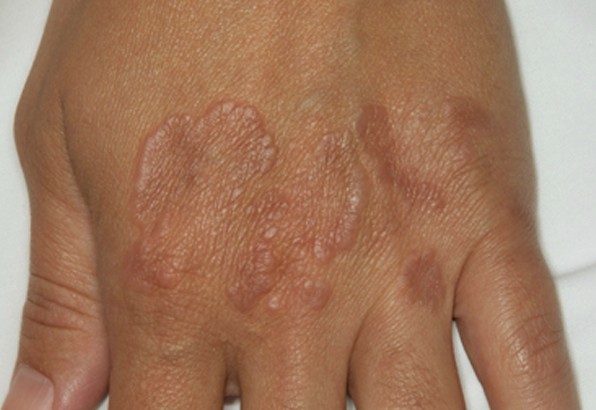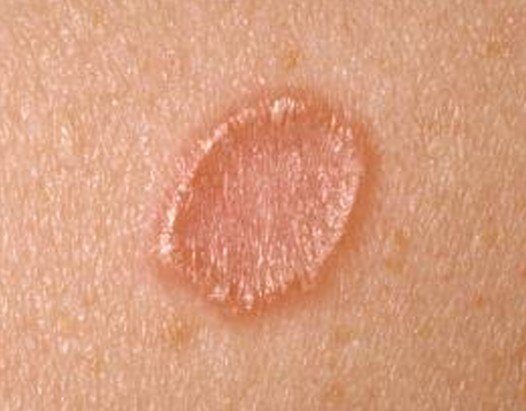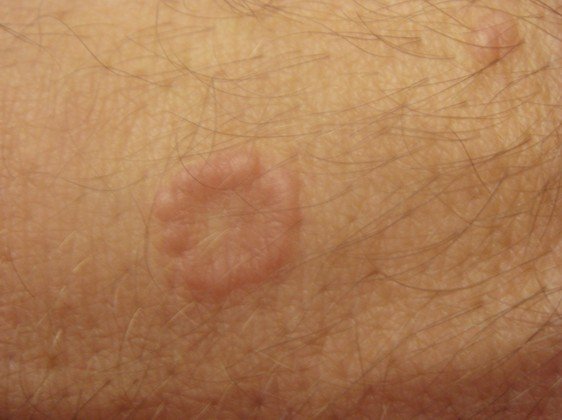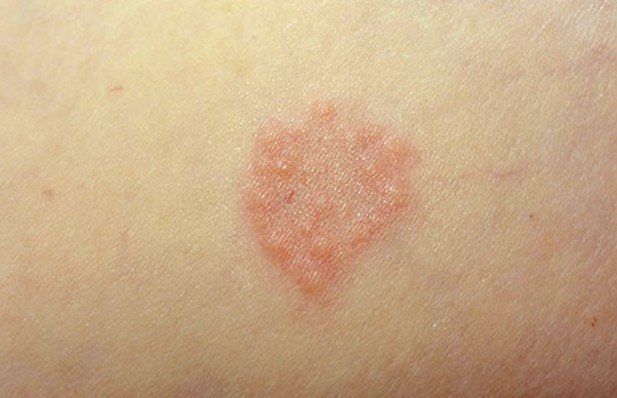Granuloma Annulare
Last reviewed by Dr. Raj MD on January 12th, 2022.
What is Granuloma Annulare?
This is a chronic benign inflammatory skin disorder that can affect any age group but is most commonly found in young adults, especially girls over the age of fifteen, and children. It can also affect any gender but it has been shown that females are at a higher risk of getting Granuloma Annulare. It is most commonly found on the top of your feet or the back of your hands but it can emerge elsewhere on your body. It is also considered a cosmetic disease that is self-limited without causing any systemic medical complications. People who develop Granuloma Annulare are normally in good health so this condition can be confusing to your physician trying to figure out what it is and what caused it. It appears as raised bumps that are less than half an inch and then they will emerge into clusters that are ring shaped, which are often mistaken for ringworm.
Types
There are also many types of Granuloma Annulare. They are classified based on the distribution and their symptoms. These types include:
- Localized Granuloma Annulare – this type occurs on your elbows, knees, hands, and feet.
- Generalized Granuloma Annulare – this type is where the lesions are spread out your entire body. It is a severe case with itching being associated with it along with comparatively smaller lesions.
- Subcutaneous Granuloma Annulare – this type is characterized by having below your skin epidermis pinkish nodules and there is no significant alteration of your overlying skin.
Granuloma Annulare Symptoms
At times with this medical condition there may be no symptoms, causing it to go unnoticed. If there are symptoms they can include:
- The most noticeable symptoms are lesions that are skin colored or reddish looking. It generally looks as if you have been bitten by some type of insect.
- When this disease starts out the bumps are round, smooth, and small but as the skin condition progresses it will lead to lesions. With these lesions you may or may not have itching and pain.
These skin lesions are usually skin colored with papules that are dome shaped and range in color from red to purple that is arranged in a half or complete circle. Yes, it is a chronic medical condition but the symptoms will usually not last for more than fourteen to twenty-one days at a time. It can remain in admission for months, even years.
Causes
What causes Granuloma Annulare they are still not sure but due to the medical studies that have been done they claim that it is an immune system reaction that is caused by the side effects of medication and this is what plays a role in causing these types of skin lesions. There is also some cases in which it occurs in patients with thyroid problems and diabetic. Many physicians feel that because this is happens in thyroid and diabetic patients that is could be related to thyroid and diabetes diseases. At this time there is no clinical proof if Granuloma Annulare, diabetes, and thyroid conditions are related or not.
Diagnosis
This medical condition is diagnosed by examining the skin lesions on your body. In order to rule out any other skin disorder your physician may have a biopsy test performed in which a skin sample will be taken from the affected area and then is put under the microscope to be studied. A blood test is sometimes done to check for other possible medical conditions.
Granuloma Annulare Treatment
Granuloma Annulare skin lesions may disappear on their own within a couple of years. It has no potential health impact but because of how the lesions affect their physical appearance may opt to have them treated. Once it has been correctly diagnosed as Granuloma Annulare your physician may prescribe medications such as corticosteroids to help improve their skin texture along with helping to speed up the lesions disappearing. The reason that physicians and dermatologists use corticosteroids is that they have anti-inflammatory properties. When used they are used they will help to cure the swelling and redness of the part of your skin that is affected.
If it is the localized type an effective treatment is a procedure called cryotherapy. This is when the dermatologist applies liquid nitrogen to the lesions on your skin in order to freeze them off. In addition to freezing off the lesions it will also help to promote new cell growth and rejuvenates your skin. One of the drawback to having this treatment it can result in hyper or hypo pigmentation. How long does it take to do this treatment depends on how widespread the lesions are but usually the treatment will only take a few minutes. On the same day you should be able to return to your normal activities.
If the localized type is bothersome and severe you can apply potent steroid cream to the area of your skin that is affected. You can even have intralesional injection where the potent steroid is directly injected into the lesions. Before using any of the treatment options for Granuloma Annulare make sure that you talk to a qualified physician or dermatologist to get advice on how to treat your case.
Natural treatments for Granuloma Annulare
- Apply mayonnaise on the affected area and leave on for twenty minutes. Wash off with cold water. Do it two times a day for two weeks. This will improve the condition of the skin bumps.
- Apply a layer of vinegar to the affected area and leave it on for ten minutes. Rinse off with warm water. Do it once a day for thirty days to get results that are positive.
- Change your diet by avoid eating fatty food and sweets. Eat a healthy diet that is rich in minerals, fibers, and vitamins. Eat two to three servings of vegetables and fruits a day. This will help to detoxify your body along with boosting your immune system.
Granuloma Annulare Pictures
Is Granuloma Annulare contagious?
Granuloma Annulare is not a contagious medical skin condition.





